5. E-Textiles and Wearables I¶
| Smart Textile |
|---|
 |
In this week I covered the basic concepts of soft circuits and their uses in textiles and the procedure of making them including clear understanding of their working principle. Also I learned about the uses of conductive threads while making sensors and switches.
Assignment¶
Study and understand the chemical dyeing methods that currently used in textile industry. Then purpose eco-friendly natural dyeing techniques and also find the way to fabricate them.
Inspiration¶
| Smart Textile Inspirational Video |
|---|
4.1. Introduction¶
Electronic Textiles (e-textiles) are fabrics that feature electronics and interconnections woven into them, presenting physical flexibility and typical size that cannot be achieved with other existing electronic manufacturing techniques.
Components and interconnections are intrinsic to the fabric and thus are less visible and not susceptible of becoming tangled or snagged by surrounding objects. E-textiles can also more easily adapt to fast changes in the computational and sensing requirements of any specific application, this one representing a useful feature for power management and context awareness.
The vision behind wearable computing foresees future electronic systems to be an integral part of our everyday outfits. Such electronic devices have to meet special requirements concerning wearability. Wearable systems will be characterized by their ability to automatically recognize the activity and the behavioral status of their own user as well as of the situation around her/him, and to use this information to adjust the systems‘ configuration and functionality.
| E-Bracelet | E-Coat |
|---|---|
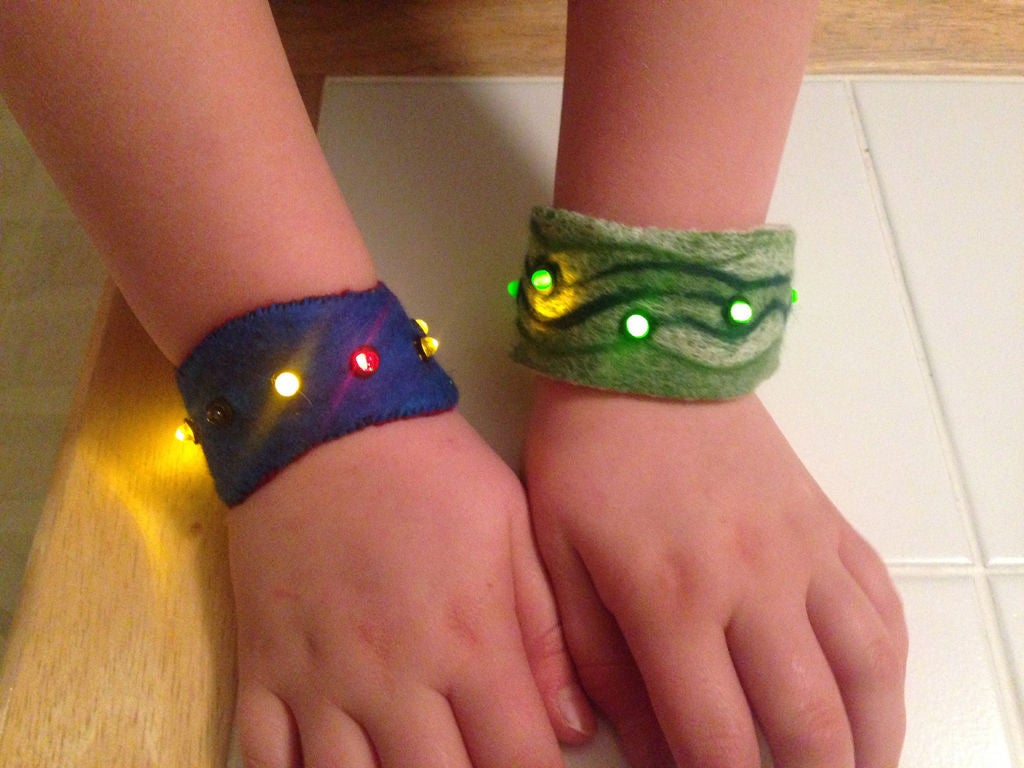 |
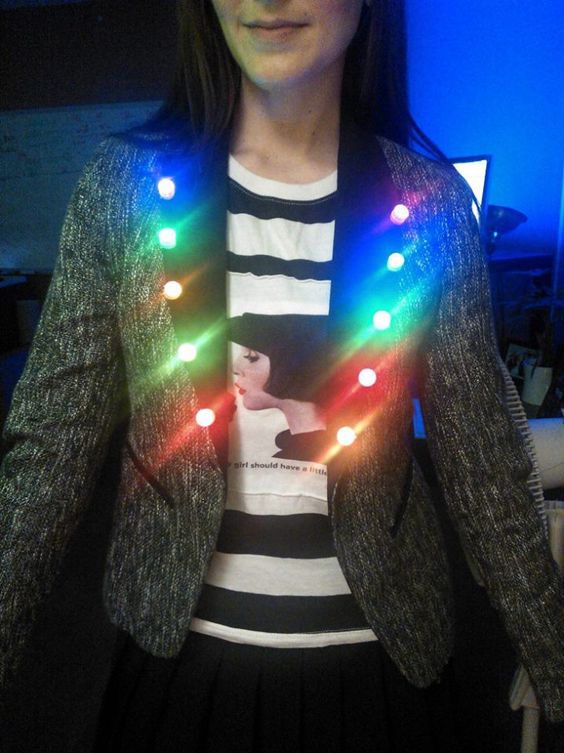 |
The process of extracting color from plants via steaming, beating, heating is called natural dyeing.
Basic Electronics Concepts¶
Electric Current¶
It is defined as the rate of flow of charge through a particular area of cross section of a conductor. The direction of flow of current is always from a region of higher potential to a region of lower potential. The direction of current is opposite to direction of flow of electrons because they carry negative charge and will move from a region of higher potential. It is a scalar quantity. We define it mathematically as
Current, i = dq/dt. Electricity can exist in a number of forms, but there are two types of commonly used electricity:
Direct Current, which is provided by batteries, and . . . Alternating Current which is provided by electric utilities or other power generators in the form of electrons -- called current -- flowing through a wire -- called a conductor.
Circuit¶
A circuit is a path that electric current flows around.
Resiistance¶
Electrical resistance is defined as the resistance to flow of electricity through a material. Even the best conductors, such as gold, have some resistance.
Basic Current Law¶
Ohm’s Law is V = IR, where V = voltage, I = current, and R = resistance. Ohm’s Law allows you to determine characteristics of a circuit, such as how much current is flowing through it, if you know the voltage of the battery in the circuit and how much resistance is in the circuit.
Conductor and Insulators¶
Digital Multimeter¶
Open and Closed Circuits¶
Closed circuit is when everything is connected in the path to ground or reference. An open is when there is NO current flow. You can have a voltage reading across an open but there is no current because there is no physical path.
| Open and Closed Circuit |
|---|
 |
In a continuity test, a small voltage is applied to the two points of the circuit that need to be checked. The current flow between these two points determines if it’s an open or closed circuit. Usually, there is a buzzer or led in series (inside continuity meter) to identify if the current flows through it or not.
A close-circuit provides a closed path for the current flow & an open circuit does not allow the current flow. These circuits can be distinguished using the continuity test.
| Continuity Test For Open and CLosed Ciruit |
|---|
 |
Polarity¶
Notice the “+” and “-” signs drawn at the ends of the break in the circuit, and how they correspond to the “+” and “-” signs next to the battery’s terminals. These markers indicate the direction that the voltage attempts to push the current, that potential direction commonly referred to as polarity
Conductive Thread and Fabric¶
Conductive thread can carry current the same way that wires can, which means it can be used to create a circuit. This allows the user to sew a circuit together, creating flexible circuits that require no soldering. In some textile-based projects, this is the most practical tool to maintain the hang of the fabric.
A conductive textile is a fabric which can conduct electricity. Conductive textiles can be made with metal strands woven into the construction of the textile or by conductive yarns which are conductive thanks to a metal-coating. There is also an interest in semiconducting textiles, made by impregnating normal textiles with carbon- or metal-based powders.
| Conductive Thread | Conductive Fabric |
|---|---|
 |
 |
Required Equiupment and Tools for the Assignment¶
| Equipmet and Tools | ||||
|---|---|---|---|---|
| Conductive Thread | Sewing Needles | Scissors | Piezo Buzzer | Arduino IDE |
| Conductive Fabric | Colored Felt | LED'S | Neopexil RGB Strip | Snap Buttons |
| Sewable Battery Holder | Multimeter | Beans | Long Nose Pliers | |
| Coin Cell Battery | Resistors | Breadboard | Voltage Regulator |
1 - Digital Momentary Switch¶
First I simply designed the sketch in TinkerCAD software. I have used momentary push button, LED and bread board and then simulated the circuit.
| Digital Momentary Switch | |
|---|---|
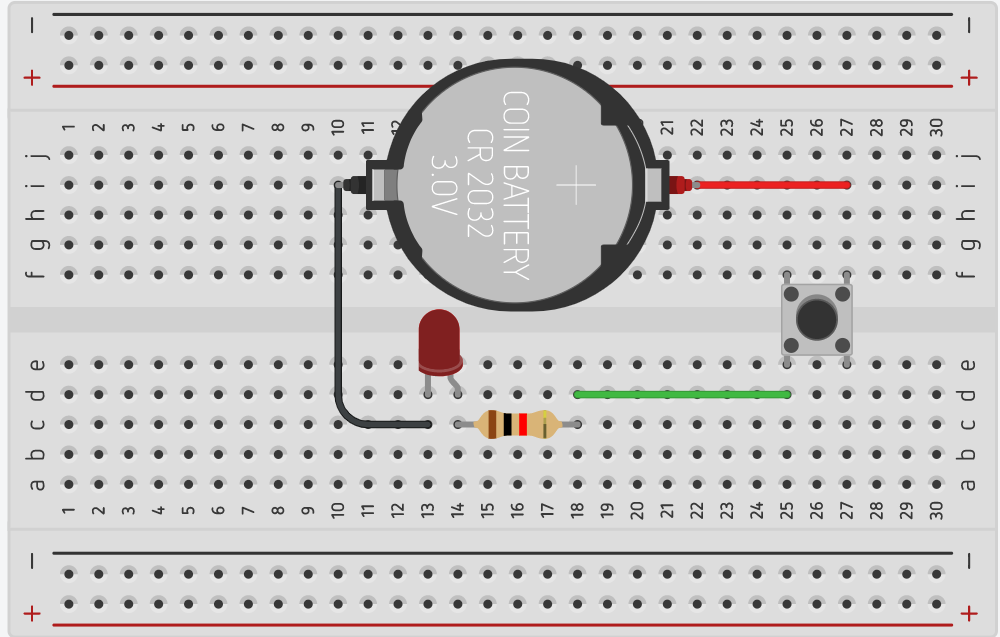 |
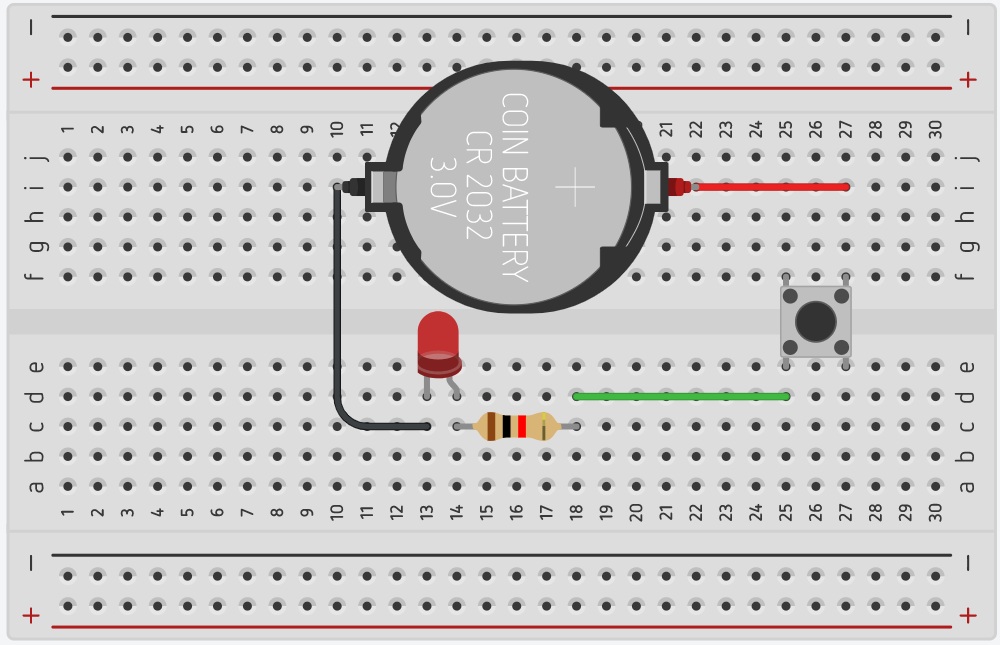 |
then i made simple sketch using LED's, Battry and conductive thread as follows.
| Continuity Test For Open and CLosed Ciruit |
|---|
 |
 |
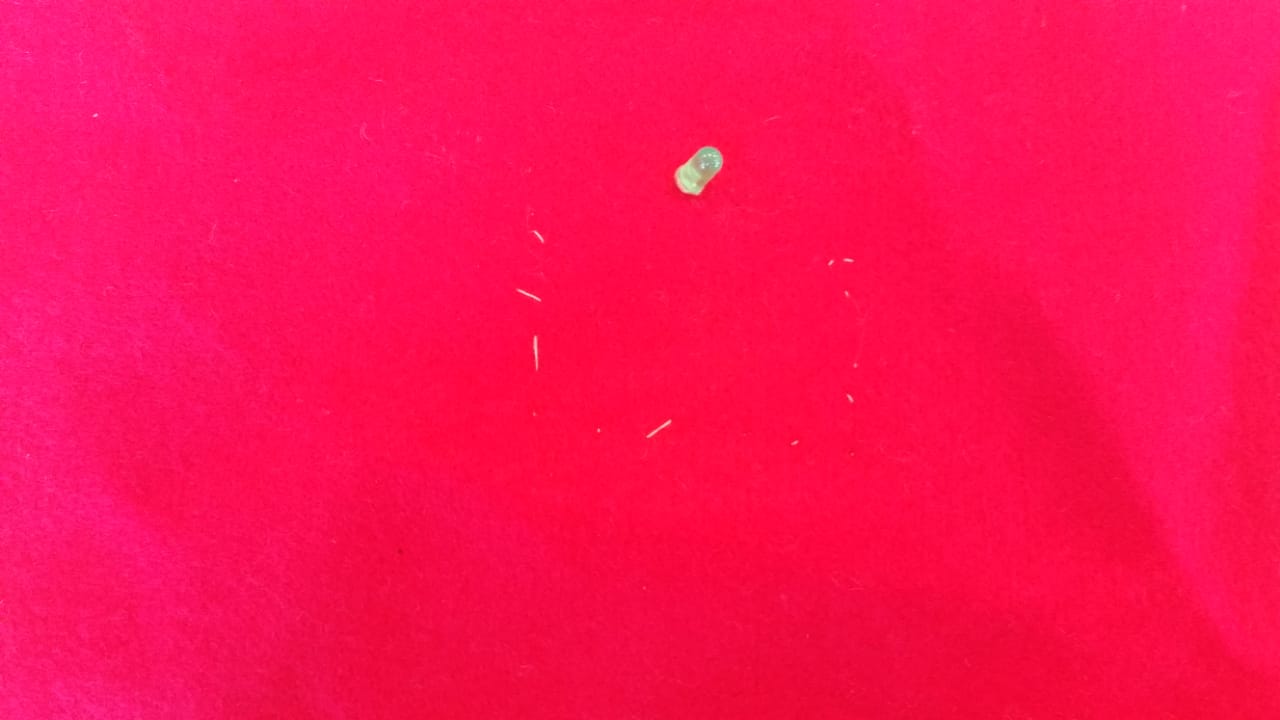 |
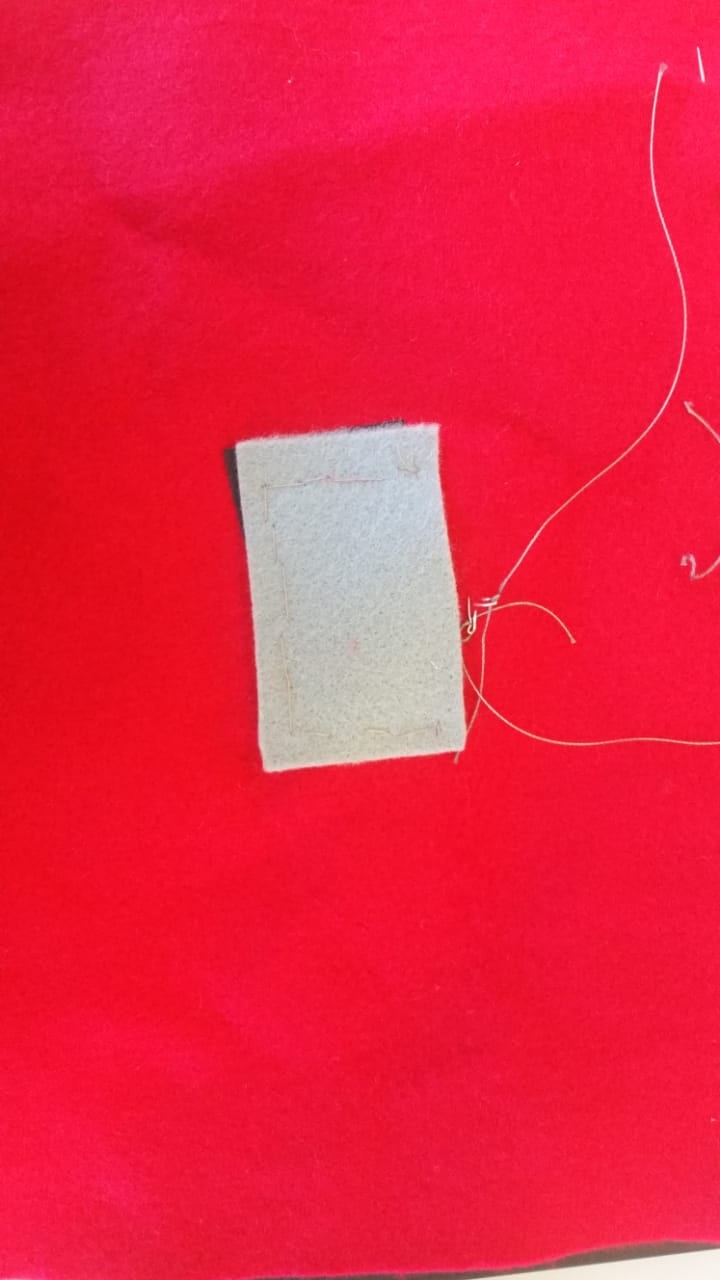 |
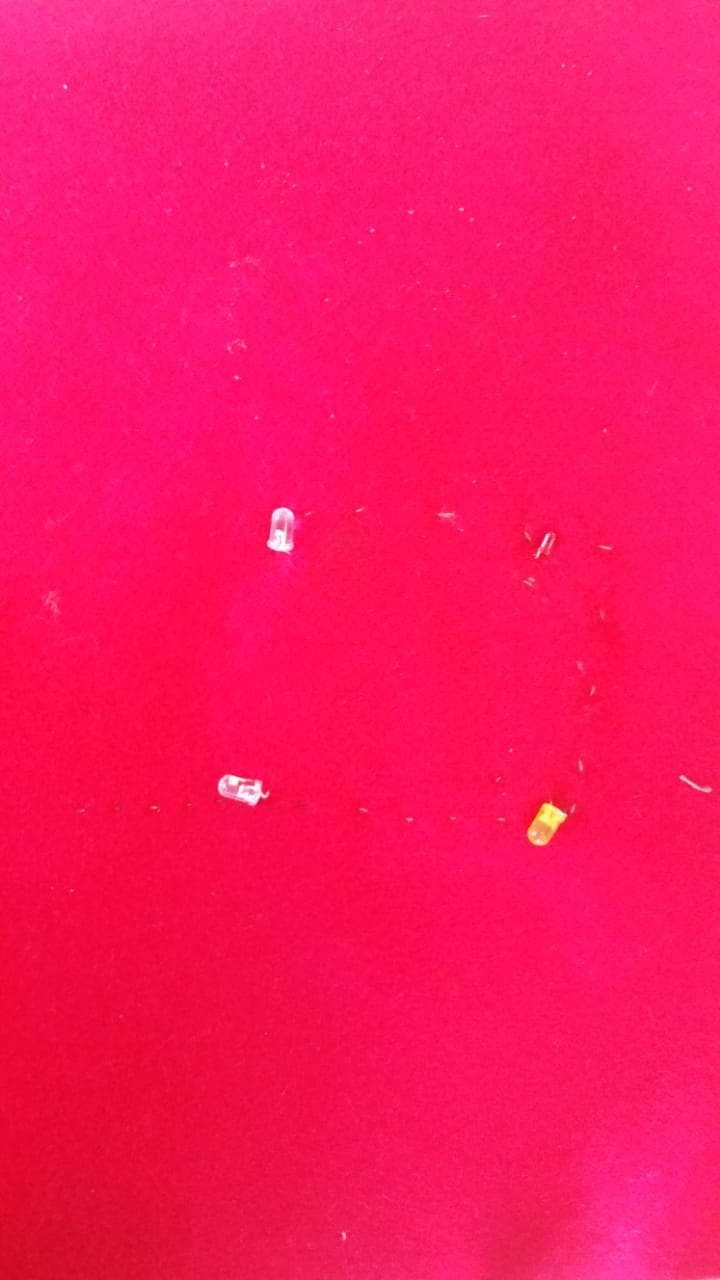 |
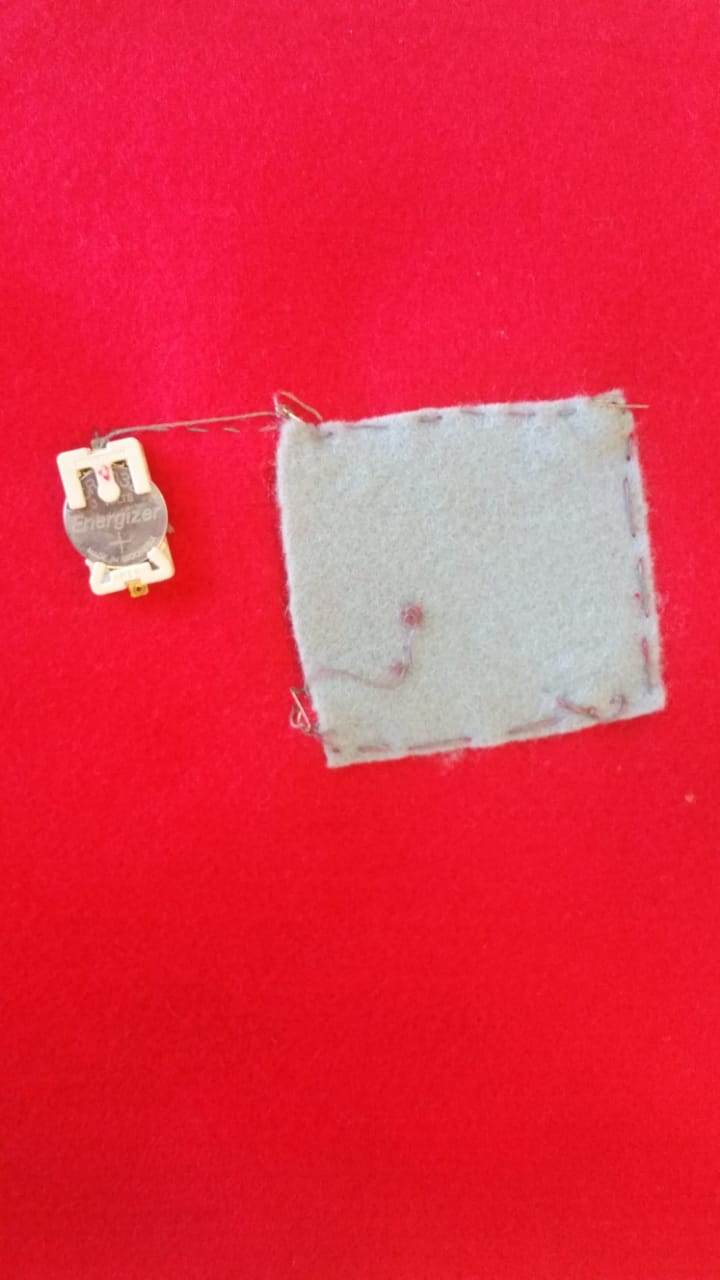 |
2 - Analog Switch¶
| Analog Switch | ||
|---|---|---|
 |
 |
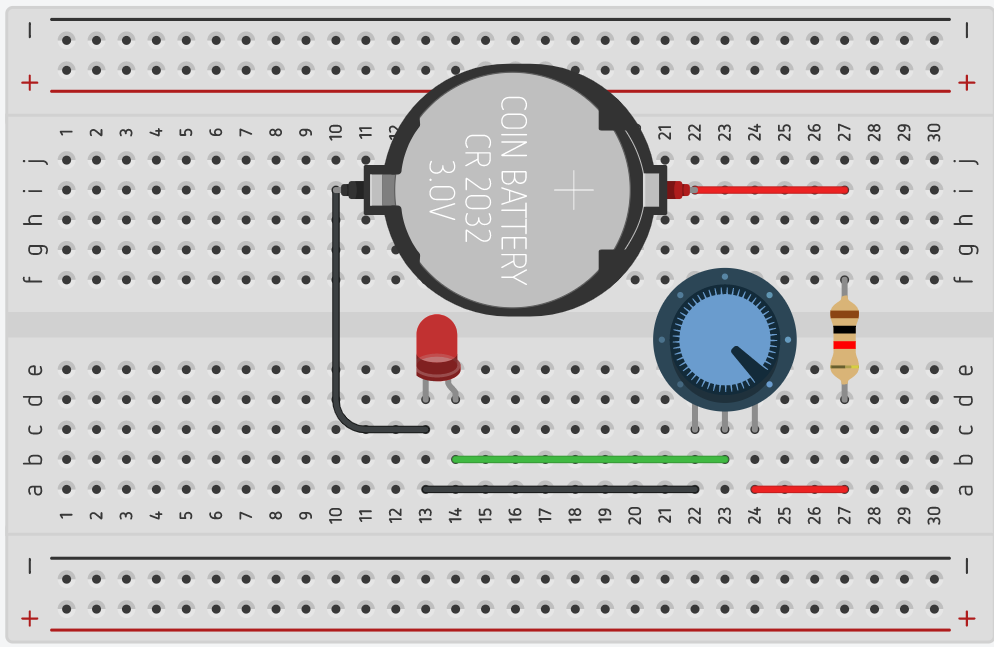 |
Then, I made a bracelet design in Rhinocerose as follows
| Rhineceros Design |
|---|
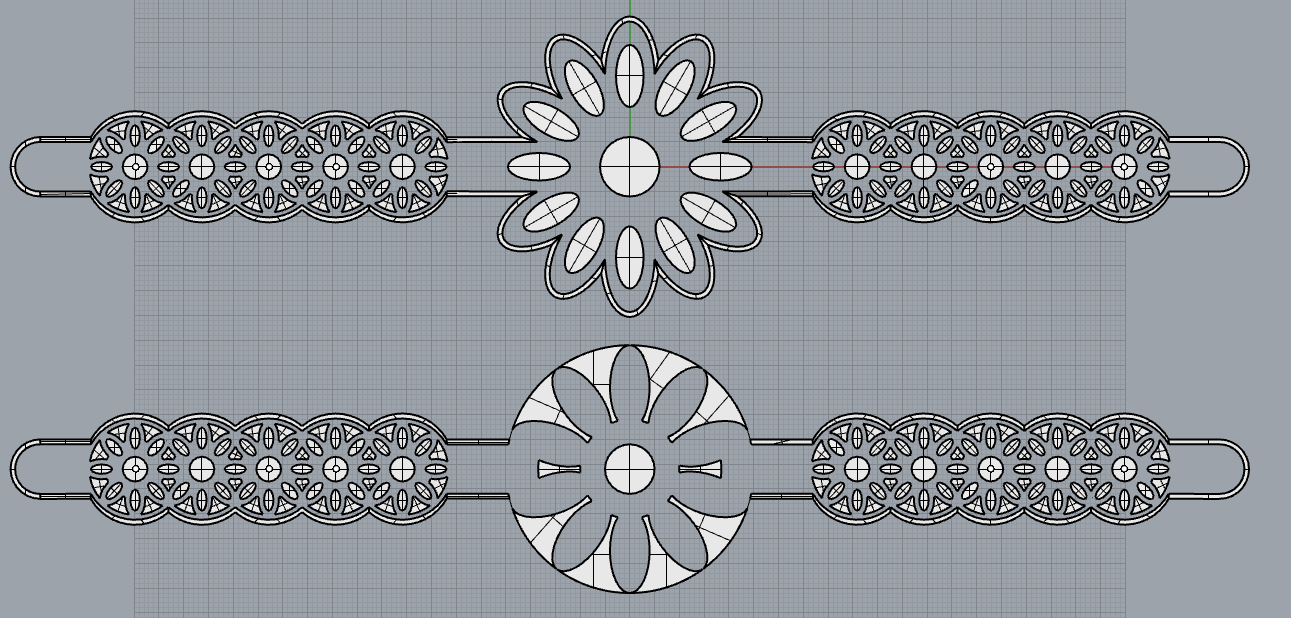 |
Before sending the file to laser cutting machine I put fabric inside the laser cutting machine.
| Fabric for Laser Cutting |
|---|
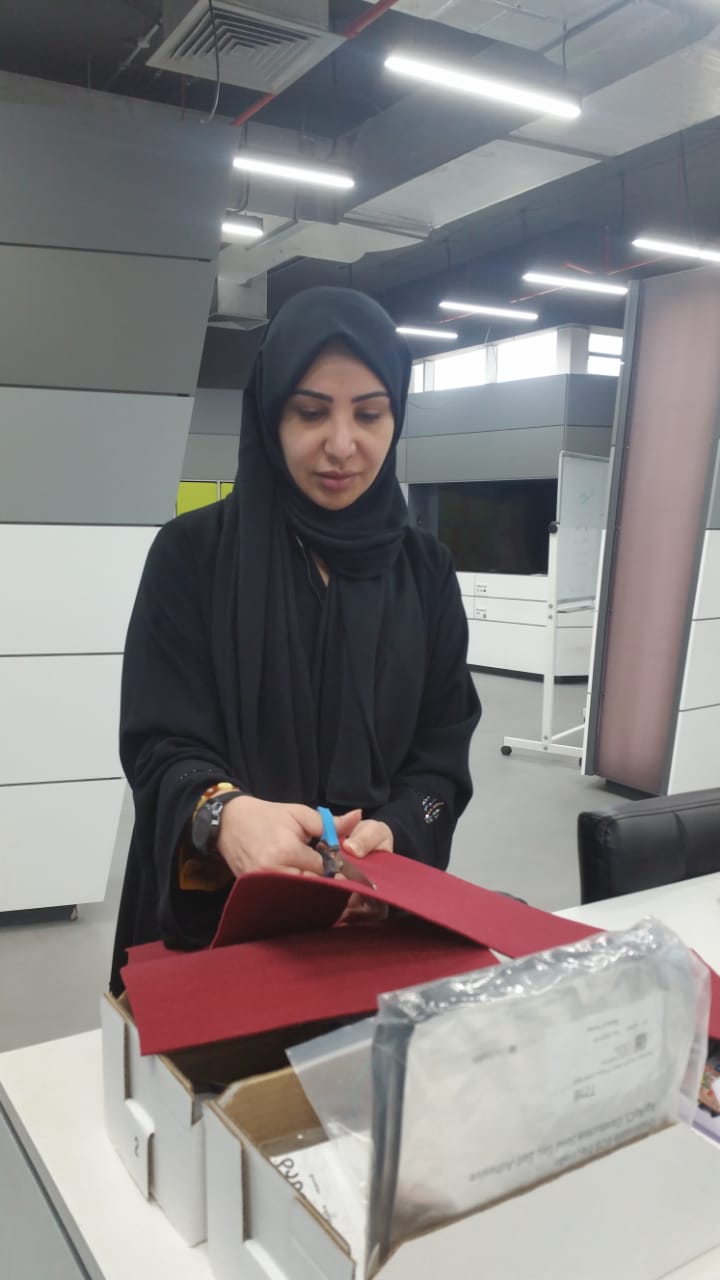 |
After making the design in Rhinocerose I saved the file with dxf extension for laset cutting and I select 100 % speed and 30 % power as mensiotned in the manual.
| Laser Cutting File |
|---|
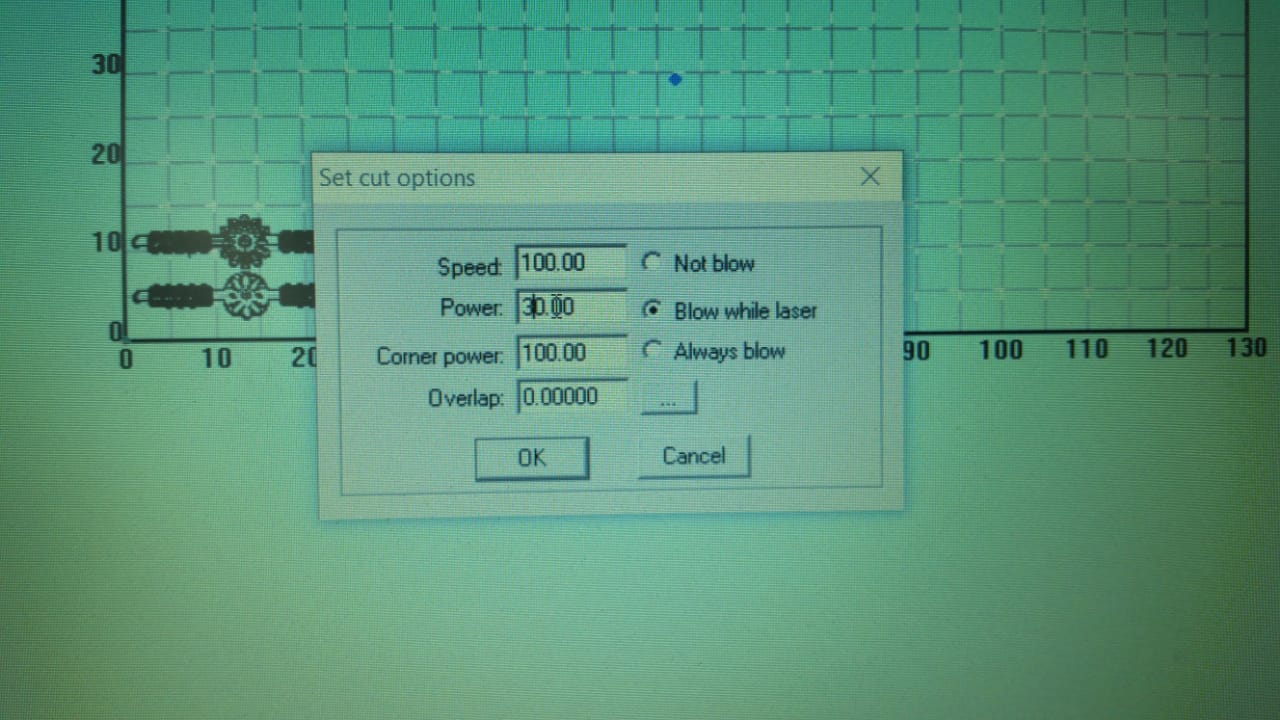 |
But when laster starts cutting, the fabric starts burning. I can justify that it is due to complex and small design for barcellet. That is the main reason laser machine unable to cut appropriately as design was
| Laser Cutting of Fabric |
|---|
 |
 |
Actually, I was trying to make bracellet and include led's in it with push button but unfortunately fabric starts burning when I put it on laser cutting machine.